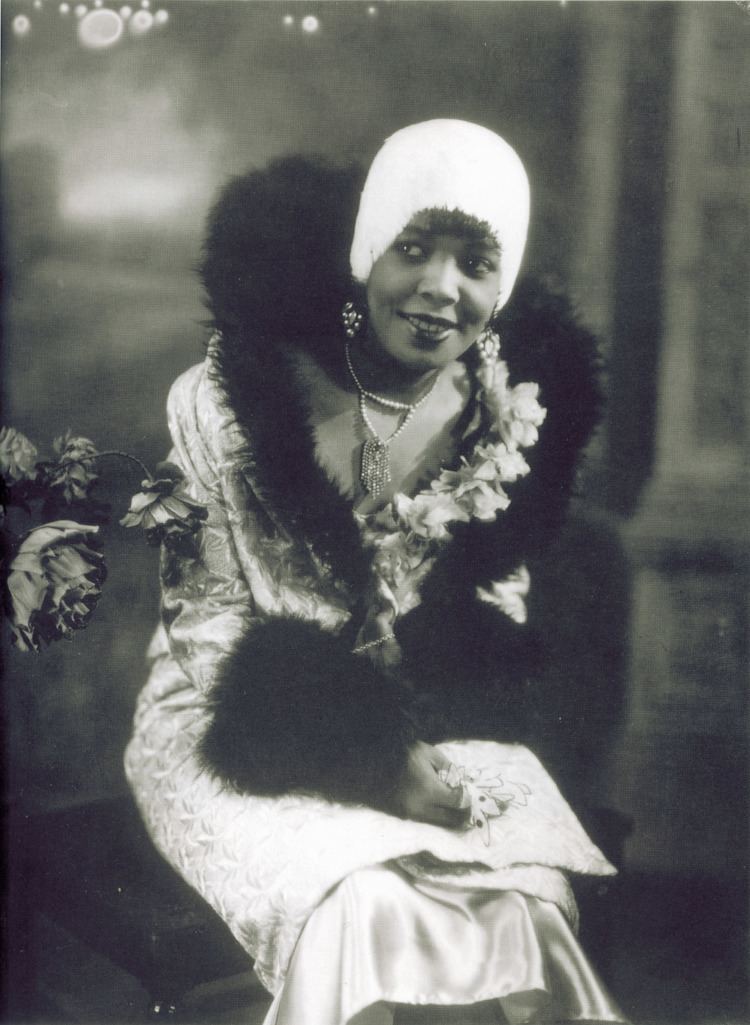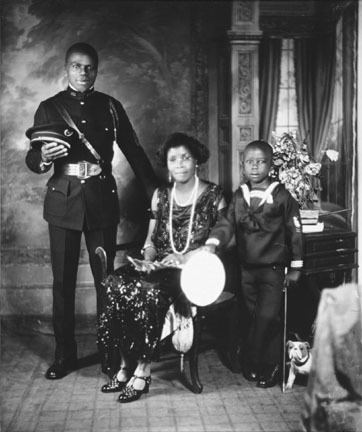Name James Der Role Photographer | Books Vanderzee | |
 | ||
Died May 15, 1983, Washington, D.C., United States | ||
James van der zee wmv
James Van DerZee (June 29, 1886 - May 15, 1983) was an African-American photographer best known for his portraits of black New Yorkers. He was a leading figure in the Harlem Renaissance. Aside from the artistic merits of his work, VanDerZee produced the most comprehensive documentation of the period. Among his most famous subjects during this time were Marcus Garvey, Bill "Bojangles" Robinson and Countee Cullen.
Contents
- James van der zee wmv
- James van der zee photos
- Biography
- Commission from UNIA
- Harlem on My Mind
- Photographic techniques and artistry
- Solo exhibitions
- Selected group exhibitions
- Publications
- References

James van der zee photos
Biography

Van DerZee made his first photographs as a boy in Lenox, Massachusetts. He bought his first camera when he was a teenager, and improvised a darkroom in his parents' home. In 1905, he moved with his father and brother to Harlem in New York City, where he worked as a waiter and elevator operator. In 1915, he moved to Newark, New Jersey, where he took a job in a portrait studio, first as a darkroom assistant and then as a portraitist. He returned to Harlem the following year, setting up a studio at the Toussaint Conservatory of Art and Music that his sister, Jennie Louise Van de Zee, also known as Madame E Toussaint had founded in 1911.

In 1916, he and his second wife, Gaynella Greenlee, launched the Guarantee Photo Studio on West 125th Street in Harlem. His business boomed during World War I, and the portraits he shot from this period until 1945 have demanded the majority of critical attention. In 1919, he photographed the victory parade of the returning 369th Infantry Regiment, a predominantly African American unit sometimes called the "Harlem Hellfighters."

During the 1920s and 1930s, he produced hundreds of photographs recording Harlem's growing middle class. Its residents entrusted the visual documentation of their weddings, funerals, celebrities and sports stars, and social life to his carefully composed images. Among his many renowned subjects were poet Countee Cullen, dancer Bill (“Bojangles”) Robinson, Charles M. "Daddy" Grace, Joe Louis, Florence Mills, and black nationalist leader Marcus Garvey.
VanDerZee worked predominantly in the studio and used a variety of props, including architectural elements, backdrops, and costumes, to achieve stylized tableaux vivant in keeping with late Victorian and Edwardian visual traditions. Sitters often copied celebrities of the 1920s and 1930s in their poses and expressions, and he retouched negatives and prints heavily to achieve an aura of glamour. He also created funeral photographs between the wars. These works were later collected in The Harlem Book of the Dead (1978), with a foreword by Toni Morrison.
Commission from UNIA
In the spring and summer of 1924, VanDerZee worked to document the members and activities of Marcus Garvey's Universal Negro Improvement Association (UNIA). He took thousands of photographs on this assignment, some of which were featured in a calendar issued to members in 1925.
Fulfilling Garvey's wishes, VanDerZee's job was to project a positive image of the Association, especially to emphasize the strength and social standing of its membership, the so-called Garveyites. Nowhere in VanDerZee's visual record was there any hint of the controversy surrounding Garvey in the early 1920s: a period when the leader was subject to public interrogation, quarrels with the writer and philosopher W.E.B. DuBois, and legal proceedings against him on charges of mail fraud.
Harlem on My Mind
In 1969, VanDerZee gained worldwide recognition when his work was featured in the exhibition, Harlem on My Mind, at the Metropolitan Museum of Art in New York. His inclusion in the exhibition was somewhat by accident. In December 1967, a researcher for the exhibition (and a photographer in his own right), Reginald McGhee, came across VanDerZee's Harlem studio and asked if he happened to have any photographs from the 1920s and 30s.
In a story recounted by photo historian Rodger C. Birt, VanDerZee showed him the boxes and boxes of negatives he had kept from this period. These photographs would become the core of Harlem on My Mind—and the feature of the exhibit that critics routinely praised as the show's biggest revelation. As art historian Sharon Patton observed, VanDerZee not only documented the Harlem Renaissance, but also helped create it.
Harlem on My Mind marked a controversy between the Met and a number of practicing artists then living and working and Harlem. Painters including Romare Bearden and Benny Andrews protested the show for its emphasis on social history and experience, at the expense—as they viewed it—of interest in the artistic legacy of black New York artists. On opening day, a picket line formed in front of the Met. Andrews carried a sign reading: "Visit The Metropolitan Museum of Photography."
Photographic techniques and artistry
Works by VanDerZee are artistic as well as technically proficient. His work was in high demand, in part due to his experimentation and skill in double exposures and in retouching negatives of children. One theme that recurs in his photographs was the emergent black middle class, which he captured using traditional techniques in often idealistic images. Negatives were retouched to show glamor and an aura of perfection. This affected the likeness of the person photographed, but he felt each photo should transcend the subject.
His carefully posed family portraits reveal that the family unit was an important aspect of VanDerZee's life. "I tried to see that every picture was better-looking than the person." "I had one woman come to me and say 'Mr. VanDerZee my friends tell that's a nice picture, but it doesn't look like you.' That was my style." Said VanDerZee. VanDerZee sometimes combined several photos in one image, for example by adding a ghostly child to an image of a wedding to suggest the couple's future, or by superimposing a funeral image upon a photograph of a dead woman to give the feeling of her eerie presence. VanDerZee said, "I wanted to make the camera take what I thought should be there."
VanDerZee was a working photographer who supported himself through portraiture, and he devoted time to his professional work before his more artistic compositions. Many famous residents of Harlem were among his subjects. In addition to portraits, VanDerZee photographed organizations, events, and other businesses.
